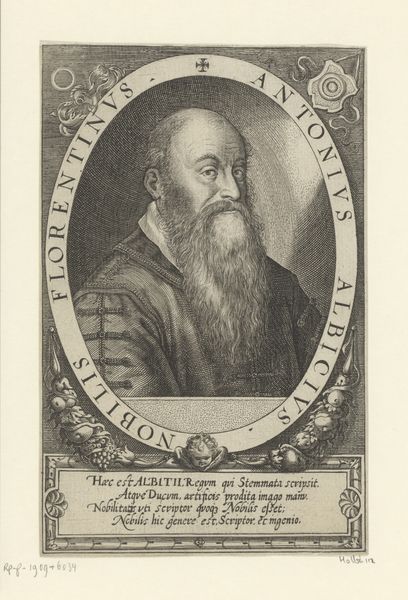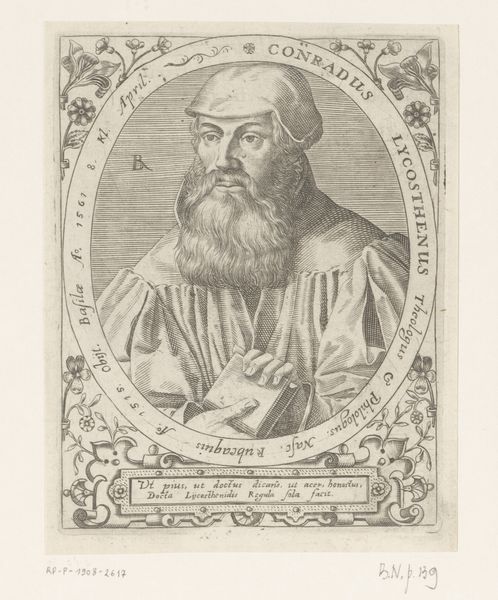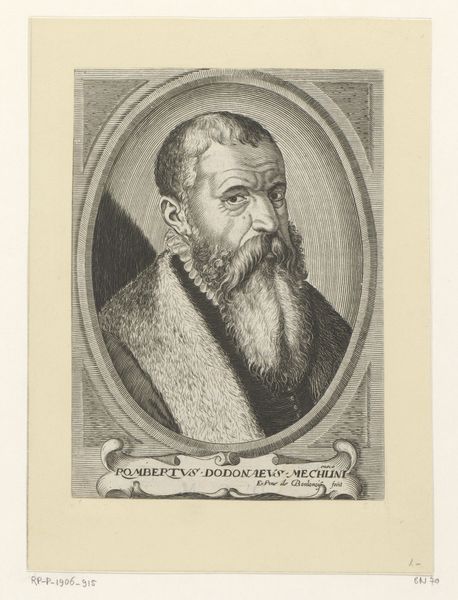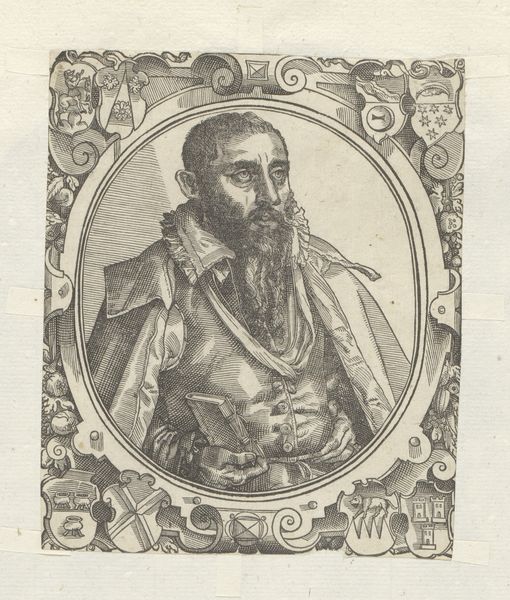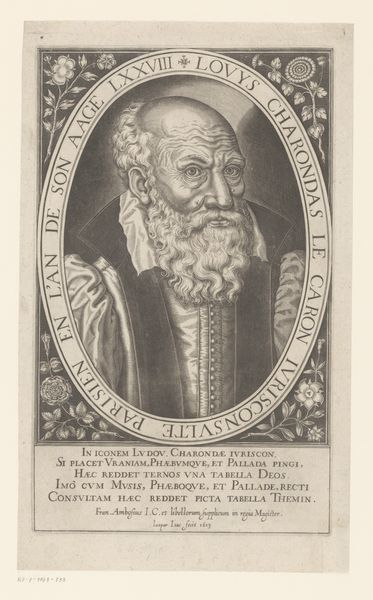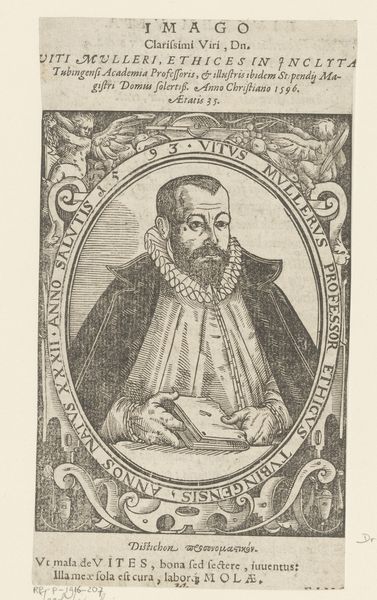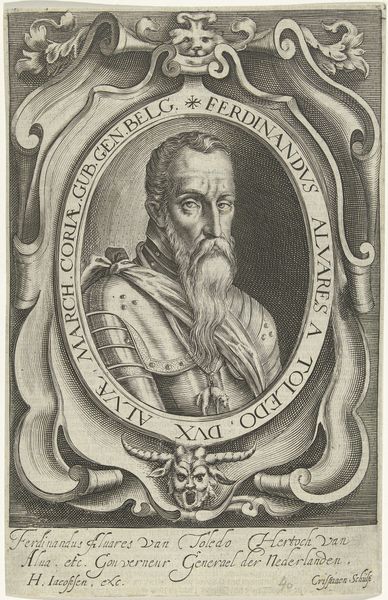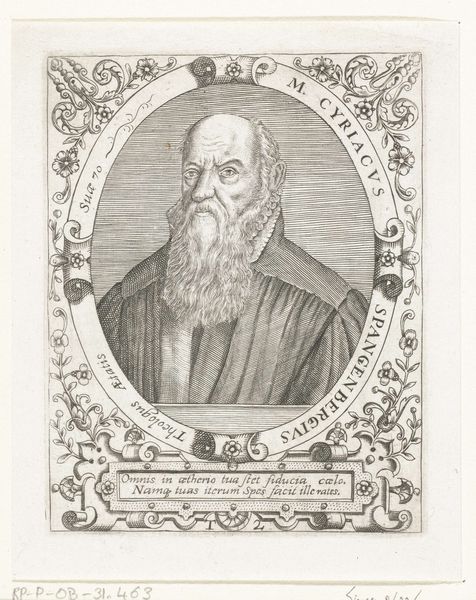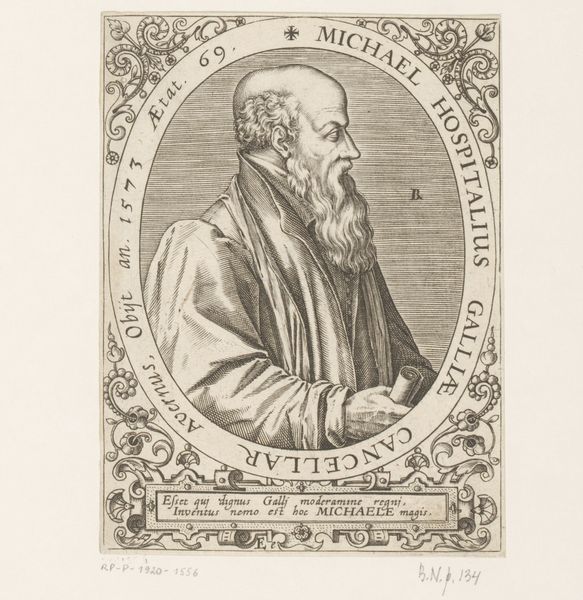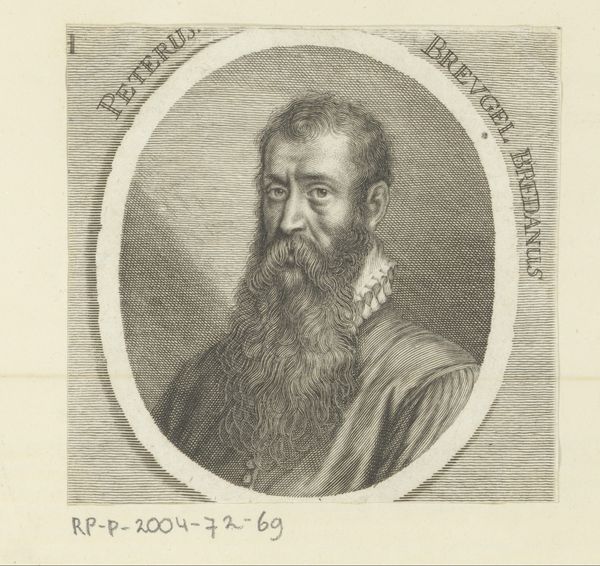
print, engraving
#
portrait
#
aged paper
# print
#
old engraving style
#
limited contrast and shading
#
portrait drawing
#
history-painting
#
italian-renaissance
#
engraving
Dimensions: height 140 mm, width 100 mm
Copyright: Rijks Museum: Open Domain
Editor: So, here we have Theodor de Bry's "Portret van Julius Caesar Scaliger," an engraving from sometime between 1597 and 1669, held here at the Rijksmuseum. I'm struck by how much detail the artist managed to get into such a small print, especially around the face and beard. It also seems really intent, gazing straight ahead. What stands out to you most when you look at this portrait? Curator: The power of printed portraiture lies in its accessibility and its function as a conveyor of status and intellect. Consider the frame, brimming with allegorical figures. They remind us that even seemingly simple images were, in fact, deeply coded with meaning. It suggests Scaliger’s classical education, his connection to antiquity, even ambition! How does the inscription play into this, do you think? Editor: Good question. The inscription is something I passed over pretty quickly at first. Are you referring to the text within the rectangular cartouche at the bottom of the artwork? Curator: Precisely. Inscriptions were often included to solidify the subject's identity, accomplishments, or character. What sentiments do you imagine the portrait aims to convey? Is it reverence, intellectual prowess, or perhaps a carefully constructed image of authority? The allegorical imagery suggests deeper layers than simple likeness. Editor: I think it’s a little bit of all three, perhaps with an emphasis on portraying Scaliger as a learned figure and an authority. The text even seems to allude to him as a 'Caesar' in intellect if not in power. The winged figures definitely signal some type of idealization. Thanks, I learned a lot today. Curator: Likewise. Exploring these layers—status, allegory, symbolism—gives us a much richer understanding of the artwork and its era.
Comments
No comments
Be the first to comment and join the conversation on the ultimate creative platform.
